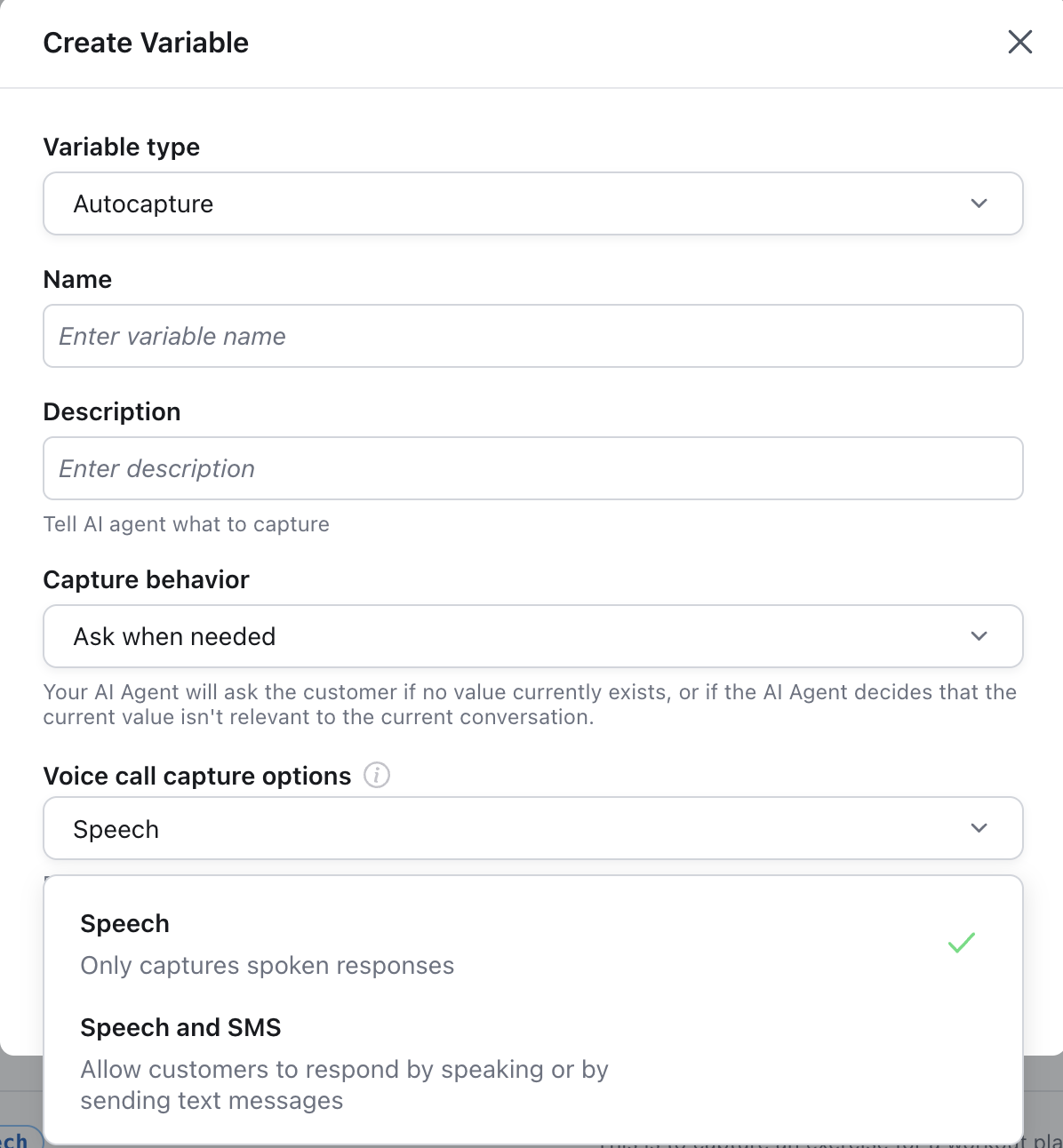Voice call capture options
Capture modes for Action inputs
Actions enable your AI Agent to integrate with systems that are external to Ada using API calls. Often times, you will need to capture Inputs from end users to use in your Actions. For example, if you have an Action that looks up an end user’s order status, then you may need to collect an order number from the end user.
If you’re using your AI Agent in Voice, then you’ll also be able to define a Voice call capture option for each of these inputs. The capture option you select determines the method(s) your AI Agent will capture the input from the end user.
Different capture options suit different types of information being captured, so configuring appropriate capture modes help set your AI Agent and your end users up for success.

The capture options vary depending on the Type of input you are capturing.
- Text — Speech: Your AI Agent will capture the input from the end user’s spoken response. — Speech and SMS: Your AI Agent will give the end user the option to provide the input by speaking it or by responding to a text message from the AI Agent with the input.
- Number — Speech: Your AI Agent will capture the input from the end user’s spoken response. — Speech and SMS: Your AI Agent will give the end user the option to provide the input by speaking it or by responding to a text message from the AI Agent with the input. — Speech and DTMF: Your AI Agent will give the end user the option to provide the input by speaking it or by using their phone’s dial pad.
- Boolean — Speech: Your AI Agent will capture the input from the end user’s spoken response.
Voice call capture options for autocapture variables in Processes
When you create a Process, you have the ability to capture information from an end user using auto-capture variables. When you create an auto-capture variable, you will be able to select a Voice call capture option for that variable, which defines the methods your AI Agent uses to collect those variable values from end users. Different capture options suit different types of information being captured, so configuring appropriate capture modes help set your AI Agent and your end users up for success.

There are two capture modes you can select: — Speech: Your AI Agent will capture the input from the end user’s spoken response.
If your auto-capture variable name reflects that the variable being captured is numerical (ex. phone number, amount, etc.), your AI Agent will also allow end users to provide this value using DTMF (i.e. using their phone’s dial pad) in addition to speaking it. Before capturing a value, your AI Agent will automatically tell end users that they can either say the number or enter it into their dial pad.
If you find that the AI Agent is not providing this option for an auto-capture variable and you want it to, try updating your auto-capture variable name to make it clearer that it is numerical.
If you find that the AI Agent is providing this option for an auto-capture variable and you don’t want it to, try updating your auto-capture variable name to make it clearer that it is not numerical.
- Speech and SMS Capture: Your AI Agent will give the end user the option to provide the input by speaking it or by responding to a text message from the AI Agent with the input.
- Your AI Agent must get the end user’s consent before sending SMS messages. For more information, see Learn about SMS capture consent below.
Learn about SMS capture consent
Before sending any SMS messages to an end user, your AI Agent must obtain consent from the end user to send them. There are some important things to note about SMS consent:
- This consent only applies to your ability to send a single SMS to the end user as part of the conversation; you can’t also use this consent to add the end user’s phone number to marketing lists or send them additional SMS messages for other purposes.
- SMS only works for mobile devices. End users may be using landline phones, or may not want to receive SMS messages, so be prepared for end users not to be able to use SMS capture in all cases.
Before sending an SMS message to an end user, your AI Agent asks for their consent to do so.